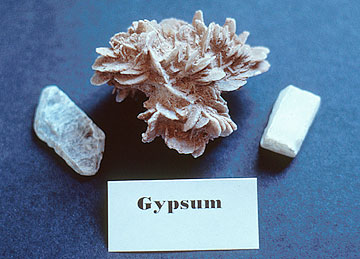Salinity Management Guide

Several crystalline forms of gypsum. Within soil, gypsum often occurs not as crystals like these but as a white residue.
Useful vocabulary
Salt, saline, salinity
The term salt has a relatively precise definition, chemically speaking. It is a compound that forms from a cation and an anion and can ionize in solution.
So, a salt, when present within a water solution, results in a mixture of cations and anions. And when water containing salt-related anions and cations evaporates, one or more types of solid eventually may precipitate. The result is the visible form of salt we more commonly recognize and associate with this term: a whitish, powdery, or crusty residue — a mineral deposit.
Sodium chloride is familiar to many of us as common table salt. Many other salts are common, too, though less well-known. This group includes:
- gypsum (calcium sulfate),
- lime (calcium carbonate), and
- Epsom salt (magnesium sulfate).
A water is considered saline if it contains moderate or relatively high amounts of dissolved salt. The term is most often employed to describe water that would, if evaporated fully, leave behind salts incorporating sodium, calcium, or magnesium. Salinity is simply the degree to which a water is saline.
| « Previous page | Next page » |